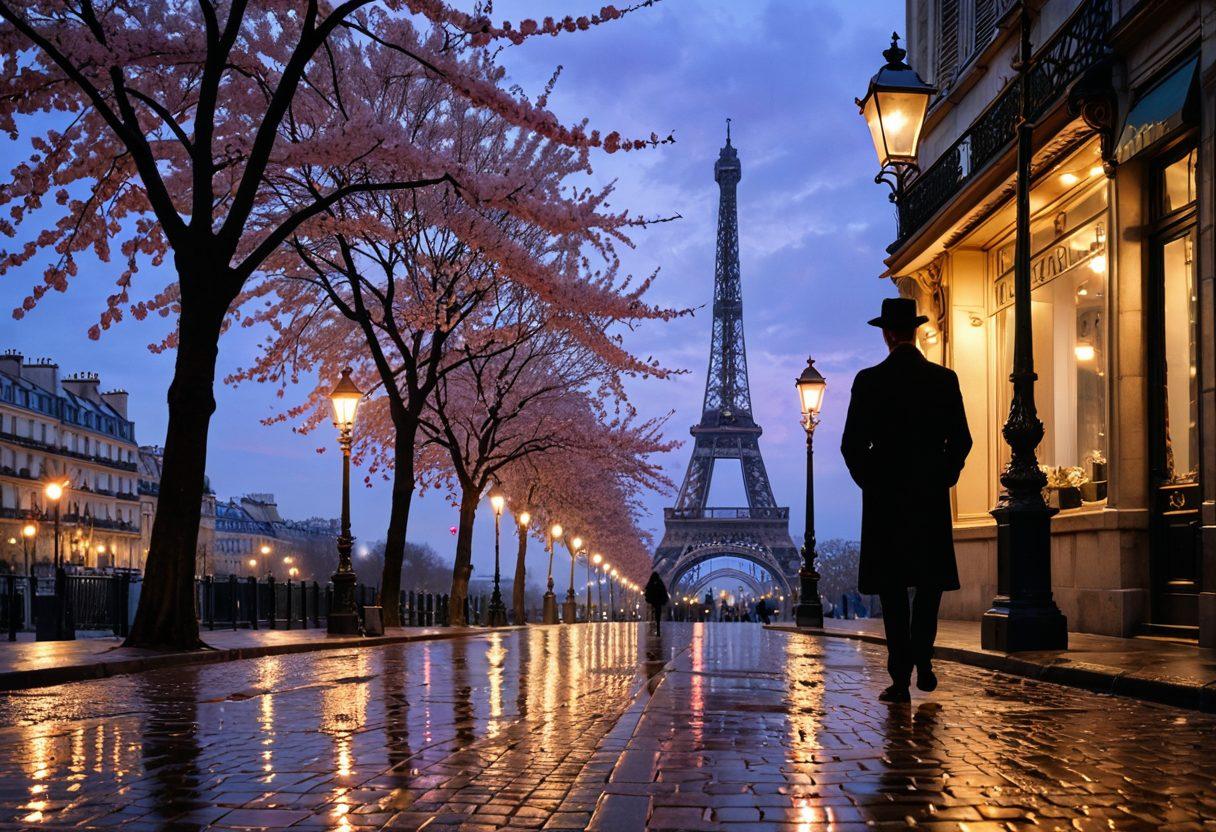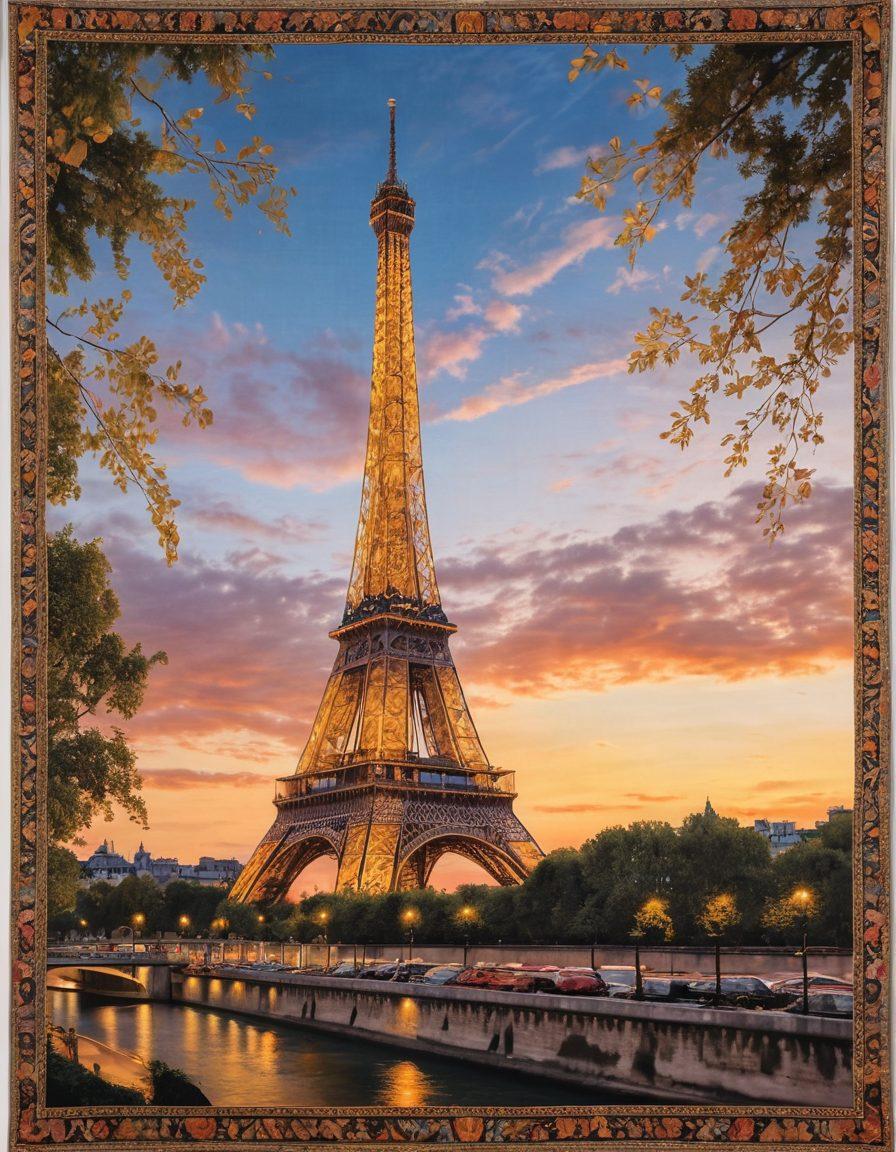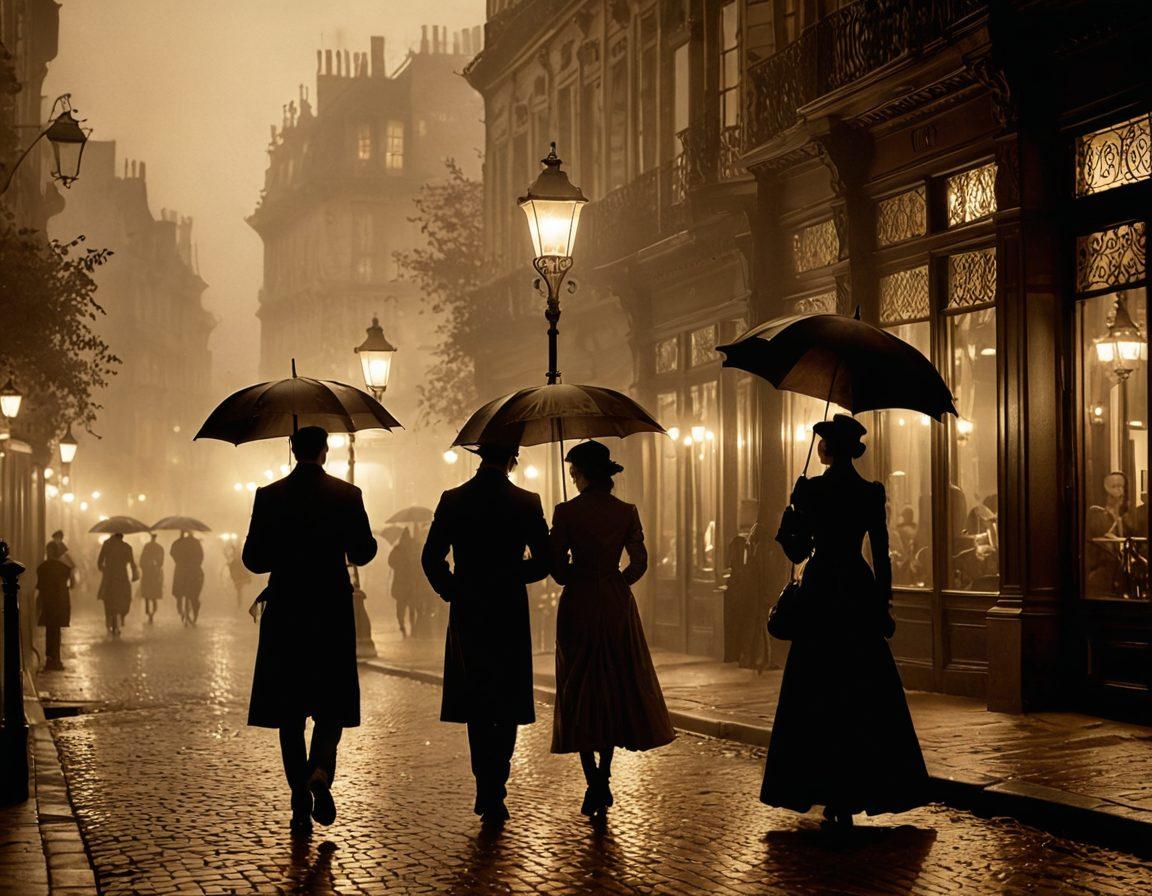Exploring the Elegance of Heartbreak: A Journey Through Melancholy in Victorian Paris
In the heart of the French capital, a romantic allure lingers in the air, interwoven with threads of melancholy and elegant sorrow. Paris, the city of lights, has long been a canvas for artistic expression, capturing the essence of grief and heartbreak in ways that still resonate today. During the Victorian era, this poignant blend of sadness and beauty became a hallmark of the era's aesthetics. It invites us to ponder: how can heartbreak, particularly in a city as charming as Paris, evoke such deeply nostalgic emotions?
Imagine strolling down the boulevards of Paris, where the gas lamps flicker softly in the twilight, casting a warm glow on the chilly streets. The elegant architecture looms around you like a nostalgic reminder of days gone by. Heartbreak finds its way into every corner of this bustling city, draping a veil of dejection across the vibrant culture. A quote from Victor Hugo whispers through the air, 'The greatest happiness is the freedom of the heart.' Yet, paradoxically, it is this very freedom that leads us to the brink of grief. How does one navigate these emotions entwined with the beauty and sadness of romantic Paris?
The Victorian aesthetic in art and poetry flourished amid this urban sadness, giving birth to a tapestry of emotional expression that often explored themes of loss and longing. Sad poetry blossomed in the salons, where intellects met and exchanged ideas, each word dripped in a bittersweet eloquence. Poets and artists alike encapsulated their sorrows onto the canvas and the page, creating a haunting beauty that endures. This interplay between the vibrant life of Paris and the melancholic thoughts of its people introduces a captivating narrative that leaves us wistful. What stories of love and loss linger within the shadows of this city?
One cannot discuss Victorian melancholy without acknowledging the profound impact of social expectations on the emotional lives of individuals. The suffocating nature of Victoria style decorum frequently intensified feelings of grief and sadness, as hearts longed to break free from rigid conventions. As you weave through the crowded streets and quaint cafes, you can't help but feel the weight of those unspoken sorrows of the past. Do you ever feel that sometimes the most beautiful stories are the ones filled with sorrow, urging us to embrace our vulnerability?
In exploring these themes of grief and artistic melancholy, a new understanding of heartbreak emerges—an elegance born from sadness that compels us to create, share, and connect. The romantic air of Paris invites us to reflect on our experiences of loss, leading us to appreciate the depths of human emotion. As we traverse the cobbled streets, may we find comfort in the knowledge that within the sorrowful tales of the past lay insights that can illuminate our paths today. How can we, too, transform our heartaches into works of art, allowing the elegance born of grief to enrich our own stories?
A Poignant Tapestry: Weaving Melancholy and Elegance in the City of Light
In the heart of Victoria’s Paris, where cobblestone streets whispered secrets and shadows danced beneath flickering gas lamps, an undeniable atmosphere of melancholy permeated the air. Walk the elegant boulevards lined with charming Parisian cafés and grand haussmannian buildings, and it’s easy to feel a wistful pull at your heartstrings. Was it the allure of love lost or the lingering grief of sorrowful tales? In this city, where art and emotion intertwine, the melancholy of heartbreak served not only as a bittersweet backdrop but as a poignant tapestry woven intricately throughout the fabric of society during the Victorian era.
Imagine the young artists and poets of the time. Their souls, wrought with pain and yearning, poured forth into verses that dripped with sadness and romantic longing. What if you stumbled upon a gathering of melancholic creatives at a dimly lit salon, exchanging reflections on their latest heartbreaks? Their discussions would ebb and flow, revealing how their artistic melancholy painted a picture of urban sadness that was at once shared yet deeply personal. Here, in the French capital, every sorrowful story was a brushstroke on the canvas of life, a heartbeat echoing through generations.
Consider how many love stories bloomed and withered against a backdrop of a gloomy Paris. Every romantic cloak and elegant ball gown danced in the moonlight, but behind these scenes, countless tales of dejection unfolded. How did they channel this emotional turbulence? Through the written word and expressive art, these Victorian souls transformed their grief into stunning creations. Their sad poetry captured the essence of heartbreak, allowing future generations to glimpse the raw beauty that often lies hidden behind sorrow—like the lost blooms of a once-vibrant garden.
In this elegant city, heartbreak wasn’t merely an experience; it became a muse. Artists, rendering the heart’s anguish into hauntingly beautiful sculptures and paintings, created a legacy that would inspire years of soulful explorations. The romanticism of the Victoria era thrived on deep emotional currents—the depths of despair sometimes gave rise to breathtaking beauty. Who hasn't felt a pang of longing when gazing at a piece of art that encapsulates the very essence of sadness? It’s almost as if these creations invite us into a shared experience, drawing us closer to the artists who once wandered these same streets burdened with grief.
As we delve into the streets of Victorian Paris, we must reflect on this emotion—melancholy, that bittersweet companion of love. The next time you find yourself among the graceful arches and elegant bridges of the French capital, ask yourself: What stories of heartbreak echo in the walls surrounding you? The romance and sadness blend seamlessly, turning each pathway into a narrative thread of life. So, whether you are lost in the poetry of a past love or reveling in the enchanting allure of present beauty, remember that it's okay to embrace both the elegant and the sorrowful. After all, it is through our grief that we often find the most poignant connections to art, life, and love.
Romantic Shadows: The Expression of Sadness in Victorian Parisian Art and Literature
Imagine wandering the cobblestone streets of Victorian Paris, the elegant architecture towering over you as a backdrop to the bittersweet echoes of love and loss. The air is heavy with nostalgia, every whisper of the wind carrying stories of romantic heartbreak. In this enchanting yet sorrowful era, artists and writers found beauty not only in love but in the depths of melancholy. This blog unravels the layers of sorrowful expression that shaped the cultural landscape of the French capital during the Victoria era, where exquisite art and poignant literature became vessels for emotional exploration.
Victorian Paris was a place where urban sadness met artistic brilliance. With its charming cafés and dimly lit salons, the city served as a haven for melancholic souls seeking solace in creativity. Have you ever felt a connection to a painting or a line of poetry that seemed to understand your heart's grief? That’s the power of the Victorian style, which elegantly dipped into themes of heartbreak and dejection, providing a mirror to the human experience. Artists like Gustave Moreau painted hauntingly beautiful images that depicted not just love but the complexities of sorrow that followed, turning each canvas into an invitation for introspection.
As we peel back the layers of this artistic melancholy, we encounter the haunting verses of sad poetry that echoed through the streets. Poets such as Charles Baudelaire expressed their grief and longing in emotive works that painted Paris with a wistful brush. "Sadness is but a wall between two gardens," said Khalil Gibran. This speaks volumes of how Victorian poets embraced their pain and transformed it into art, allowing it to blossom amidst the stark realities of heartbreak. The intertwining of gloom and beauty in their work serves as a timeless testament to the emotional struggles that continue to resonate with us today.
In a way, the art and literature of Victorian Paris can be seen as a collective grieving process, an acknowledgment of the anguish that accompanies love. Through elegant strokes and poignant prose, these artists captured the dejection that often cloaked society like a shroud. The romantic imagination was fueled by tales of lost love, despair, and the fleeting nature of happiness, resulting in creations that mourned but also celebrated the transient beauty of life. How often do we bury our own feelings of sadness instead of embracing and expressing them? perhaps we can learn from the past and draw inspiration from the way Victorian artists confronted their emotional realities.
The exploration of romantic shadows in this era has much to teach us about our own lives. Embracing sadness can lead to profound creativity and deeper connections with our emotions. It reminds us that grief is not merely an endpoint but often a powerful catalyst for artistic expression. Whether it’s through painting, writing, or even a quiet moment of reflection, engaging with our own melancholy can reveal intricate layers of beauty within our suffering. So, wander through the streets of Charming Paris in your mind, and allow yourself to feel the echoes of Victorian sorrow; perhaps they will inspire you to create your own nuanced narrative of love and loss.


